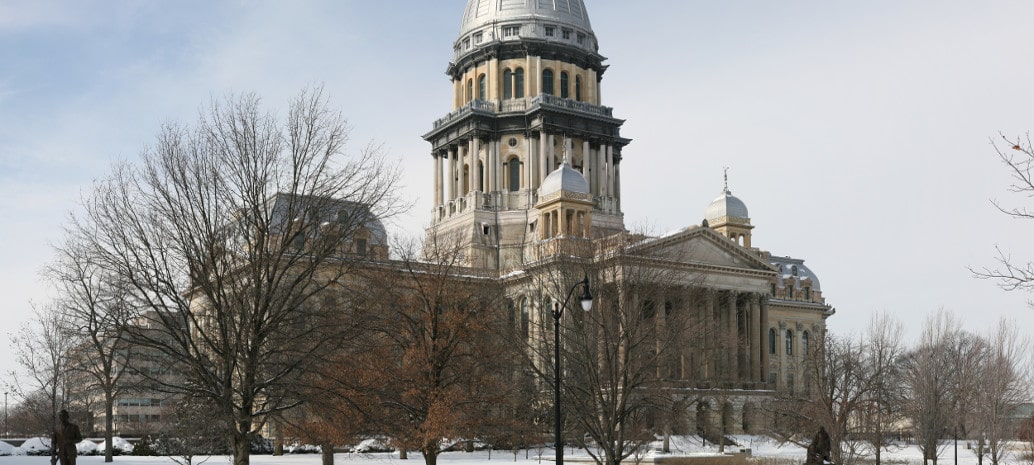Sometimes in the sausage making of the legislative process, the forces of progress win. Such appears to be the case with SB 2814, which yesterday passed the Illinois Senate without the worst aspects of the bill, and with some significant reforms for clean energy.
The bill will now go to the office of Illinois Governor Bruce Rauner (R), who is expected to sign it.
Exelon is still getting the main thing that it wants from this bill: a bailout for aging nuclear power plants in the state. However, the controversial demand charge, repeal of net metering and a bailout for aging coal plants have all been stripped from the bill, which originally ran for 422 pages.
The remaining portions of the bill appear to be largely positive for clean energy. Notably, SB 2814 will reform the state’s renewable portfolio standard (RPS) policy, including setting very large carve-outs for wind and solar.
A fact sheet produced by Environmental Law and Policy Center estimates that the new requirements will support 1.35 GW of new solar in Illinois by 2020 and 2.0 GW by 2025. Among the new solar supported by the RPS, 50% must come from distributed generation and community solar, and 2% from utility-scale PV systems located on sites previously used for an industrial or commercial purpose, including contaminated sites.
Additionally, Exelon subsidiary Commonwealth Edison will not be able to meet RPS targets with existing projects anymore, and the previously broken system of renewable energy credits will now be replaced with a declining block grant incentive program for community and distributed projects. Block grant incentive programs have been implemented in New York and California, and Massachusetts’ latest draft solar program is also following this model. The exact level of block grant incentives will not be set by SB 2814, but through a process by state regulators at the Illinois Power Agency.
The new RPS also features a $200 million budget for renewable energy credits (RECs), which will remain the incentive program for non-community utility-scale projects.
The most controversial portion of the bill, the mandatory demand charges for residential customers, was stripped from the bill after an outcry that included Governor Rauner’s office saying such charges would result in “insane rates”.
Additionally, through multi-party negotiations a provision to replace net metering with a one-time payment has been stripped, and residential and commercial and industrial (C&I) customers will still enjoy retail-rate net metering until a cap of of 5% of grid power is hit. As the 5% cap is approached, the Illinois Commerce Commission will begin a process to determine fair compensation.
Finally, a separate provision to bail out coal-fired power plants in the Southern part of Illinois was also eliminated.
Correction: This article was corrected at 6:45 AM Eastern Time (U.S.) on December 3. The previous article stated that the RPS would be expanded to 35% by 2030. This was incorrect and the RPS remains at 25% by 2025. We regret this error, which was the result of faulty information provided by a source which was later corrected. Additionally, we have included new information regarding the solar and wind carve-outs in the bill.
This content is protected by copyright and may not be reused. If you want to cooperate with us and would like to reuse some of our content, please contact: editors@pv-magazine.com.









By submitting this form you agree to pv magazine using your data for the purposes of publishing your comment.
Your personal data will only be disclosed or otherwise transmitted to third parties for the purposes of spam filtering or if this is necessary for technical maintenance of the website. Any other transfer to third parties will not take place unless this is justified on the basis of applicable data protection regulations or if pv magazine is legally obliged to do so.
You may revoke this consent at any time with effect for the future, in which case your personal data will be deleted immediately. Otherwise, your data will be deleted if pv magazine has processed your request or the purpose of data storage is fulfilled.
Further information on data privacy can be found in our Data Protection Policy.